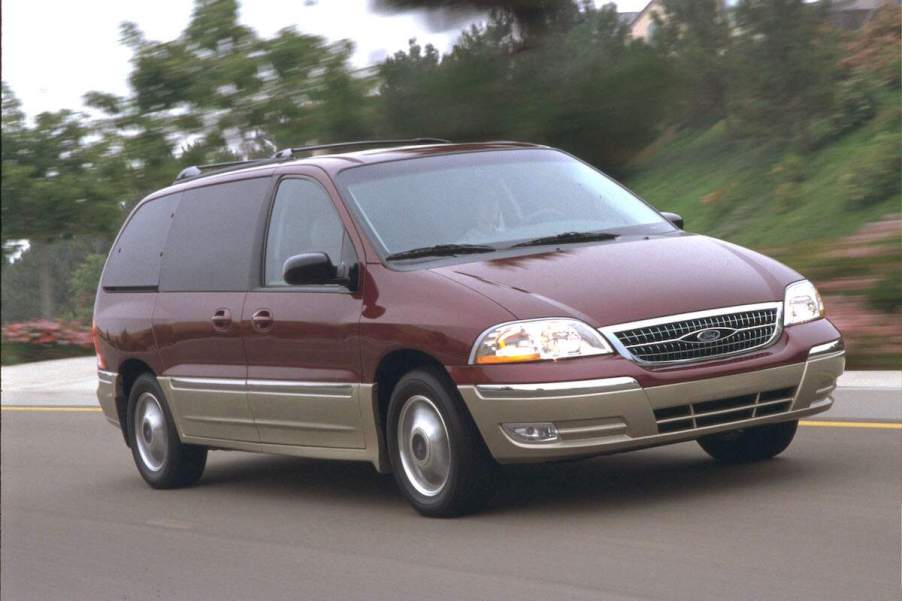
Ford and Chevy Gave Up on Minivans at Almost the Same Time
It’s unusual for big automakers to exit a segment entirely. However, that’s what happened with the minivan segment around the mid-2000s. Two of the “Big Three” American automakers — Ford and General Motors — killed their minivans in 2007 and 2008, respectively. And in 2016, Nissan bowed out when it discontinued the Quest. That leaves only four models remaining in the segment. So, what happened with the Ford and Chevy minivans? Why were they killed, and what replaced them?
How long did Ford and Chevy make minivans?

The lineage of Ford and Chevy minivans began and ended around the same time. In response to wildly successful Chrysler minivans like the Plymouth Voyager and Dodge Caravan, the Chevrolet Astro came out in 1985, and the Ford Aerostar followed in 1986.
The Astro and Aerostar had a lot in common besides their similar names. Both were available as passenger minivans or commercial cargo vans. They had rear-wheel drive and available all-wheel drive. However, the Aerostar had the distinction of being the first minivan to pack V6 engines exclusively.
General Motors set a different course for minivans starting in the 1990 model year. That’s when the Chevy Lumina APV debuted. It became the now-infamous “Dustbuster minivan” shared across other GM brands via the Oldsmobile Silhouette and Pontiac Trans Sport. The Lumina was a more car-like van with a transverse engine and front-wheel drive. It was replaced by the much more mainstream Chevy Venture that launched for the 1997 model year. In 2005, the Venture made way for the Chevy Uplander, which was discontinued after the 2008 model year, J.D. Power reports.
The history of the Ford minivan is similar. The company replaced the Aerostar with the Windstar starting in the 1995 model year. The Ford Windstar was comparable to the Chevy Venture — essentially a copycat of Chrysler minivans. A second-generation Windstar came out in 1999; then the Windstar became the Freestar in 2004. Unless you count the Transit Connect, the Freestar was the final Ford minivan, discontinued in 2007.
Both companies gave up around the start of the Great Recession
There’s a reason why Ford and Chevrolet discontinued their minivans around the same time. It was the Great Recession of 2008. The auto industry was in dire financial straits, and GM was headed for bankruptcy. Chevy and Ford cut their losses by dropping their minivans, which had a small market share compared to the class leaders from Chrysler, Toyota, and Honda.
By the time Ford and GM could afford to develop all-new minivans, the once-favorite family haulers were losing popularity to three-row crossover SUVs.
Will Ford or Chevy ever make another minivan?
We’ll likely never see another traditional minivan with sliding doors and third-row seating from Ford or Chevrolet. Both effectively replaced their family vans with midsize SUVs. Upon its debut for the 2009 model year, the Chevy Traverse superseded the Uplander, and this three-row crossover remains one of the most family-friendly options in its class.
Likewise, the 2011 Explorer marked Ford’s big switch from a body-on-frame, truck-based SUV with an optional V8 to a more car-like (or minivan-like?) crossover with front- or all-wheel drive. The fifth-generation Explorer effectively filled the minivan gap in the Ford lineup.
Luckily for families prioritizing safety, convenience, and practicality above SUV-like styling, minivans are alive and well, offering some excellent options. Just not from Ford or Chevy.





